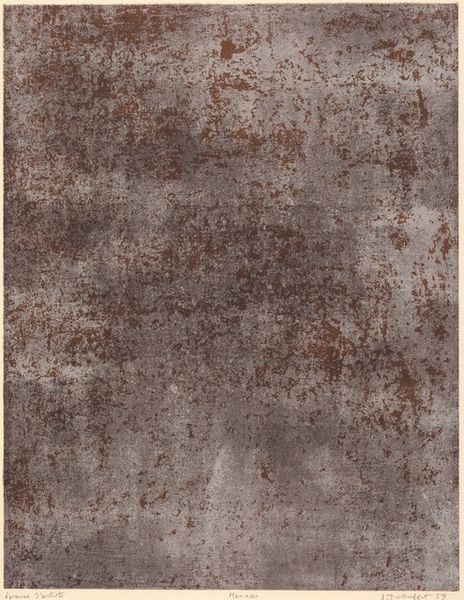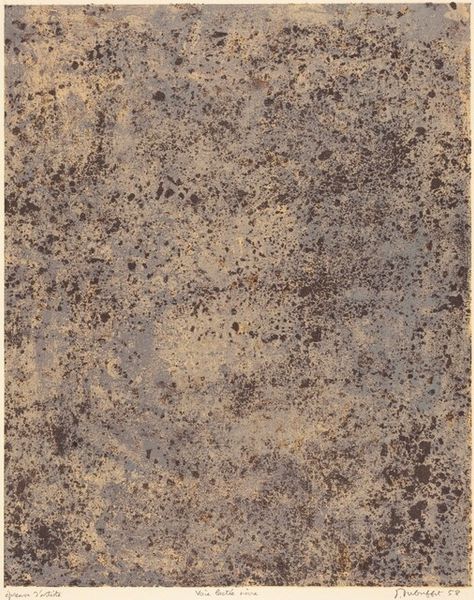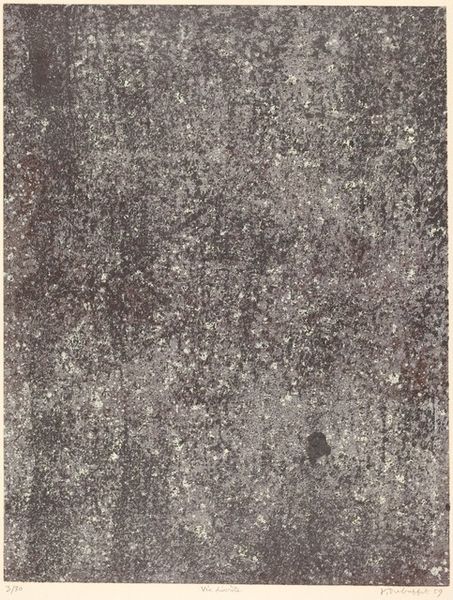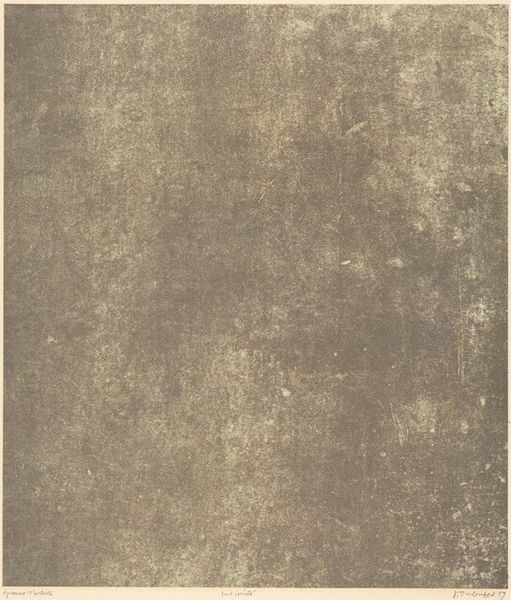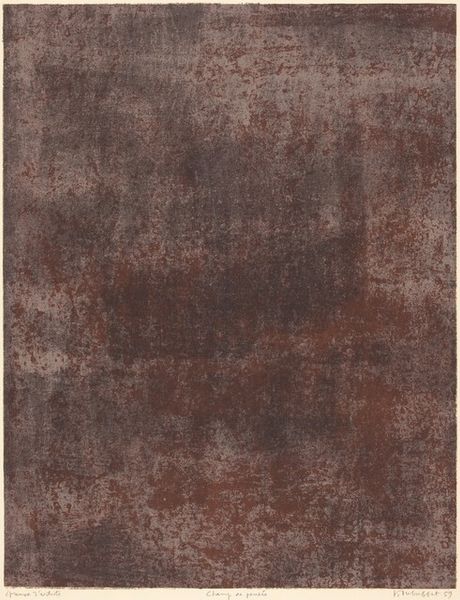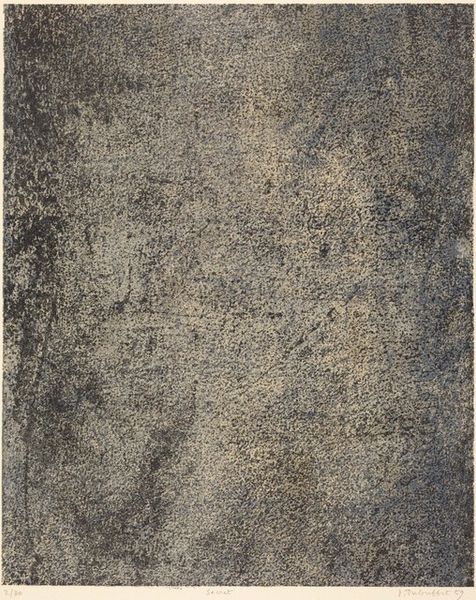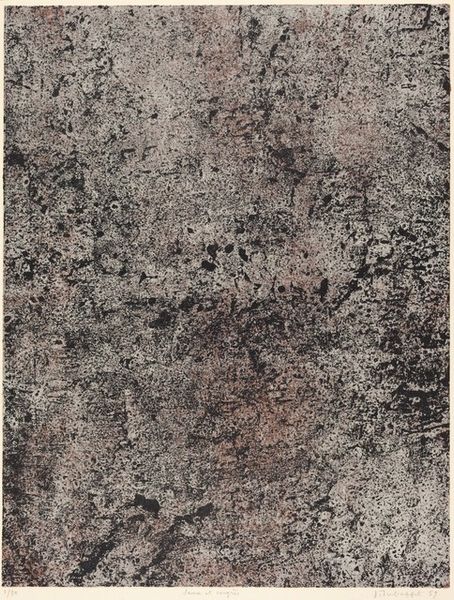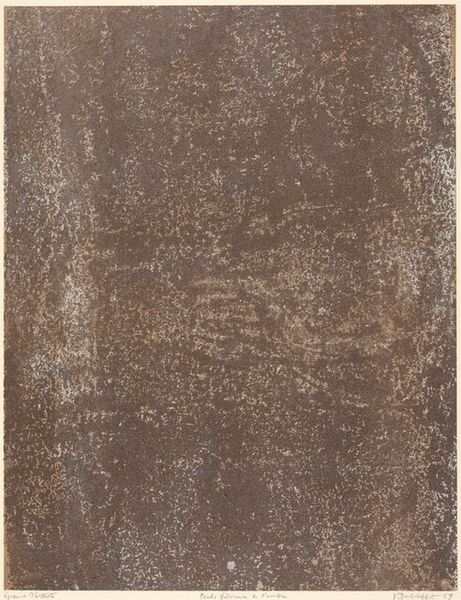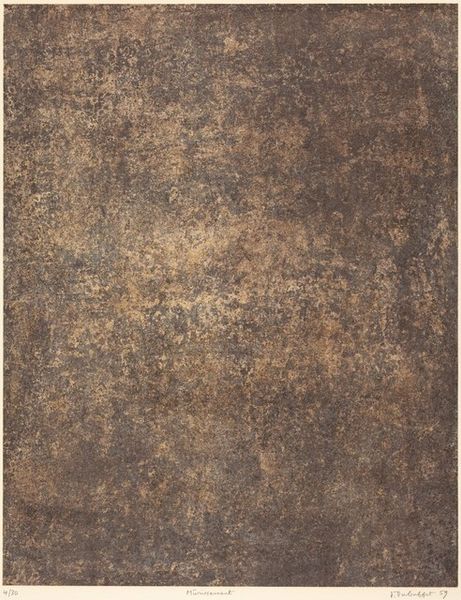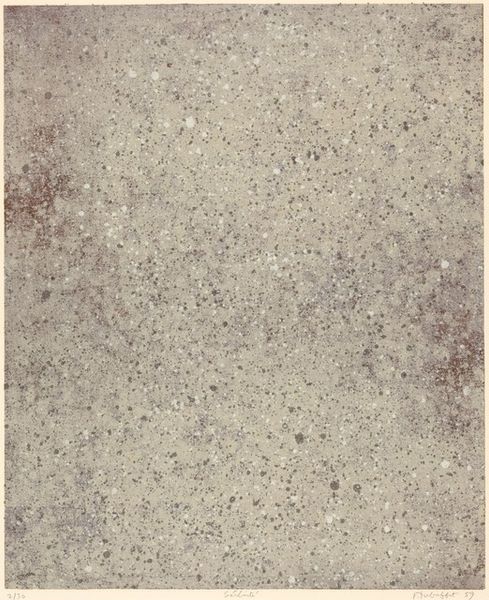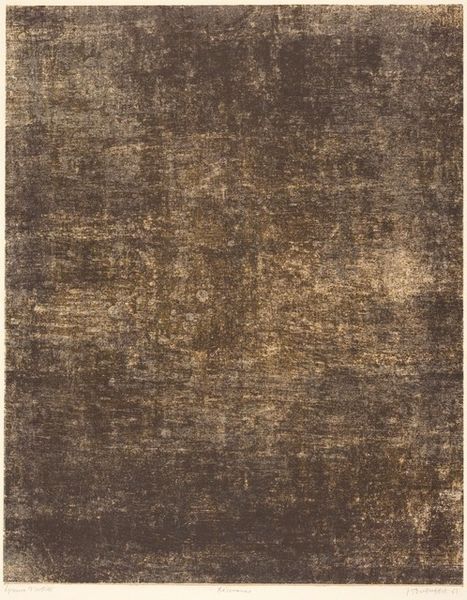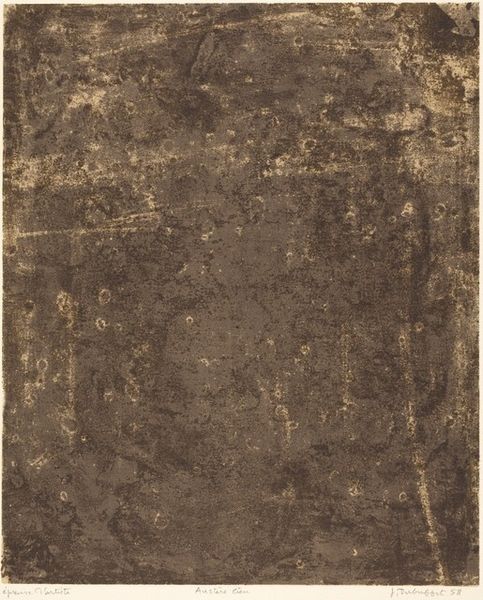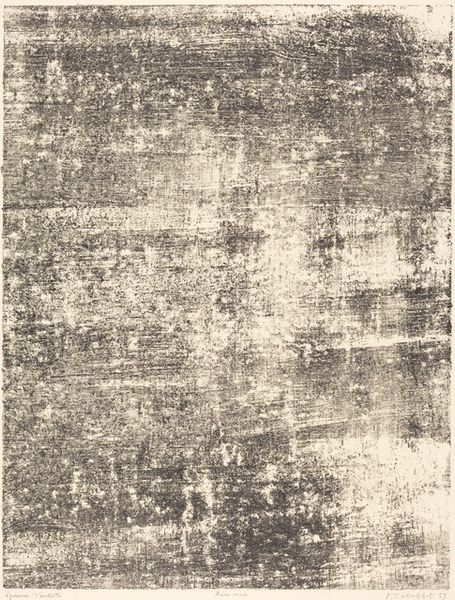
matter-painting, print
#
matter-painting
# print
#
art-informel
#
abstraction
Copyright: National Gallery of Art: CC0 1.0
Curator: Jean Dubuffet's "Tracas," a print from 1959. What's your first take on this abstract piece? Editor: Immediately, I see an image that seems aged, like a disturbed memory surfacing from some archeological dig. There's a textured grit that speaks of time and layering. Curator: Precisely. Dubuffet was interested in rejecting traditional artistic values, particularly with what he called “matter paintings.” Look at the rough, almost crude quality achieved through the printing process here. It aligns with his Art Informel stance, deliberately avoiding structure and preconceived forms. Editor: The absence of clear figures allows for a projection of meaning. It evokes a feeling of decay, and suggests to me the cyclical nature of history. The browns and greys especially give off a world-weary feel. Do you think this was Dubuffet's intention? Curator: Dubuffet often avoided explicit symbolism, preferring to explore the raw materiality of art. "Tracas," which loosely translates to "worries" or "troubles," directs our interpretation to psychological experience, a mental state captured through the image’s composition. See how the texture varies across the plane of the work, denying a singular focus, disrupting a typical focal hierarchy? Editor: It makes sense. It truly encapsulates anxiety through pure visual means. Thinking of it in relation to his peers, do you see it falling in line with what other artists were pursuing at this time? Curator: Absolutely, with others practicing Art Informel, there was this exploration into textures that mirrored emotional experience, or rather, embodied emotional states in place of traditionally composed and symbolic figures. "Tracas" reflects a broader existential questioning after the Second World War. Editor: Interesting to consider the historical moment alongside these images and their inherent textural qualities. I appreciate the insight into how Dubuffet captures emotional unease through abstraction and a rejection of conventional methods. Curator: Yes, it makes you really think about the very foundations of aesthetics and challenges the typical role of the artist, doesn't it?
Comments
No comments
Be the first to comment and join the conversation on the ultimate creative platform.
